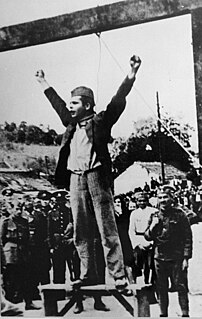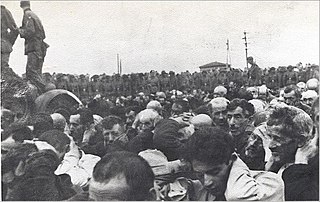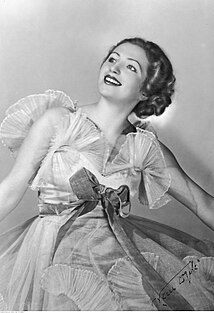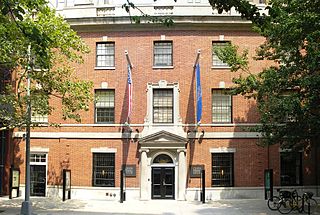 W
WJewish resistance under Nazi rule took various forms of organized underground activities conducted against German occupation regimes in Europe by Jews during World War II. According to historian Yehuda Bauer, Jewish resistance was defined as actions that were taken against all laws and actions acted by Germans. The term is particularly connected with the Holocaust and includes a multitude of different social responses by those oppressed, as well as both passive and armed resistance conducted by Jews themselves.
 W
WThe Aid and Rescue Committee, or Va'adat Ha-Ezrah ve-ha-Hatzalah be-Budapesht was a small committee of Zionists in Budapest, Hungary, in 1944–1945, who helped Hungarian Jews escape the Holocaust during the German occupation of that country. The Committee was also known as the Rescue and Relief Committee, and the Budapest Rescue Committee.
 W
WRehavam Amir (Zabludovsky) was an Israeli ambassador, civil servant and former parachutist with the Hagannah.
 W
WThe Armée Juive, was a Zionist resistance movement in Nazi occupied World War II and Vichy France which was created during January 1942 in Toulouse. It was established and led by Abraham Polonski and his wife Eugénie, the socialist Lucien Lublin, Russian poet David Knout, and his wife Ariadna Scriabina.
 W
WThe Białystok Ghetto was a Nazi ghetto set up by the German SS between July 26 and early August 1941 in the newly formed District of Bialystok within occupied Poland. About 50,000 Jews from the vicinity of Białystok and the surrounding region were confined into a small area of the city, which was turned into the district's capital. The ghetto was split in two by the Biała River running through it. Most inmates were put to work in the slave-labor enterprises for the German war effort, primarily in large textile, shoe and chemical companies operating inside and outside its boundaries. The ghetto was liquidated in November 1943. Its inhabitants were transported in Holocaust trains to the Majdanek concentration camp and Treblinka extermination camps. Only a few hundred survived the war, either by hiding in the Polish sector of the city, escape following the Bialystok Ghetto Uprising, or by surviving the camps.
 W
WThe Bielski partisans were a unit of Jewish partisans who rescued Jews from extermination and fought the German occupiers and their collaborators around Nowogródek (Navahrudak) and Lida in German-occupied Poland. The partisan unit was named after the Bielskis, a family of Polish Jews who organized and led the community.
 W
WThe Brześć Ghetto or the Ghetto in Brest on the Bug, also: Brześć nad Bugiem Ghetto, and Brest-Litovsk Ghetto was a Nazi ghetto created in occupied Western Belarus in December 1941, six months after the German troops had invaded the Soviet Union in June 1941. Less than a year after the creation of the ghetto, around October 15–18, 1942, most of approximately 20,000 Jewish inhabitants of Brest (Brześć) were murdered; over 5,000 were executed locally at the Brest Fortress on the orders of Karl Eberhard Schöngarth; the rest in the secluded forest of the Bronna Góra extermination site, sent there aboard Holocaust trains under the guise of 'resettlement'.
 W
WTheresienstadt was originally designated as a model community for middle-class Jews from Germany, Czechoslovakia, and Austria. Many educated Jews were inmates of Theresienstadt. In a propaganda effort designed to fool the western allies, the Nazis publicised the camp for its rich cultural life. In reality, according to a Holocaust survivor, "during the early period there were no [musical] instruments whatsoever, and the cultural life came to develop itself only ... when the whole management of Theresienstadt was steered into an organized course."
 W
WThe Fareynikte Partizaner Organizatsye was a Jewish resistance organization based in the Vilna Ghetto that organized armed resistance against the Nazis during World War II. The clandestine organisation was established by Communist and Zionist partisans. Their leaders were writer Abba Kovner, Josef Glazman and Yitzhak Wittenberg.
 W
WThe Ghetto Fighters' House, full name, Itzhak Katzenelson Holocaust and Jewish Resistance Heritage Museum, Documentation and Study Center, was founded in 1949 by members of Kibbutz Lohamei Hagetaot, a community of Holocaust survivors, among them fighters of the ghetto undergrounds and partisan units. The museum is named after Itzhak Katzenelson, a Jewish poet who died at Auschwitz.
 W
WHeHalutz or HeChalutz was a Jewish youth movement that trained young people for agricultural settlement in the Land of Israel. It became an umbrella organization of the pioneering Zionist youth movements.
 W
WThe Jewish Infantry Brigade Group, more commonly known as the Jewish Brigade Group or Jewish Brigade, was a military formation of the British Army in the Second World War. It was formed in late 1944 and was recruited among Yishuv Jews from Mandatory Palestine and commanded by Anglo-Jewish officers. It served in the latter stages of the Italian Campaign, and was disbanded in 1946.
 W
WŻydowski Związek Wojskowy was an underground resistance organization operating during World War II in the area of the Warsaw Ghetto, which fought during the Warsaw Ghetto Uprising and 1944 Warsaw Uprising. It was formed, primarily of former officers of the Polish Army, in late 1939, soon after the start of the German occupation of Poland.
 W
WThe Jewish Parachutists of Mandate Palestine were a group of 250 Jewish men and women from Mandate Palestine who volunteered for operations run by British organisations MI9 and the Special Operations Executive (SOE) which involved parachuting into German-occupied Europe between 1943 and 1945. Their mission was to organize resistance to the Germans, aid in the rescue of Allied personnel and carry out assignments set by the Jewish Agency of Palestine.
 W
WThe Kraków Ghetto was one of five major metropolitan Nazi ghettos created by Germany in the new General Government territory during the German occupation of Poland in World War II. It was established for the purpose of exploitation, terror, and persecution of local Polish Jews. The ghetto was later used as a staging area for separating the "able workers" from those to be deported to extermination camps in Operation Reinhard. The Ghetto was liquidated between June 1942 and March 1943, with most of its inhabitants deported to the Belzec extermination camp as well as to Płaszów slave-labor camp, and Auschwitz concentration camp, 60 kilometres (37 mi) rail distance.
 W
WThe Lutsk Ghetto was a Nazi ghetto established in 1941 by the SS in Lutsk, Western Ukraine, during World War II. In the interwar period, the city was known as Łuck and was part of the Wołyń Voivodeship (1921–1939) in the Second Polish Republic.
 W
WFranceska Manheimer-Rosenberg, better known as Franceska Mann, was a Polish Jewish ballerina who according to some accounts had killed a Nazi guard while a prisoner at the Auschwitz concentration camp, Josef Schillinger, and wounded at least one other, Wilhelm Emmerich, initiating an uprising among female Jewish prisoners before she was killed, presumably by gunfire. In the most popular version of the event, but never verified, Mann is said to have performed a striptease for members of the Nazi regime and once down to naught but high heels, took one of her shoes and stabbed Walter Quakernack in the face with the heel-piece, causing him to drop his firearm, which she then used to shoot Schillinger and Emmerich. Schillinger ultimately died from his wounds several hours later while Emmerich was left with a permanent limp. According to another account, however, she was a Nazi collaborator who was executed by the Polish underground in the Fall of 1942.
 W
WUlica Miła 18 was the headquarters "bunker" of the Jewish Combat Organization (ŻOB), a Jewish resistance group in the Warsaw Ghetto in Poland during World War II.
 W
WThe Mizoch (Mizocz) Ghetto was a World War II ghetto set up in the town of Mizoch, Western Ukraine by Nazi Germany for the forcible segregation and mistreatment of Jews.
 W
WThe Paper Brigade was the name given to a group of residents of the Vilna Ghetto who hid a large cache of Jewish cultural items from YIVO, saving them from destruction or theft by Nazi Germany. Established in 1942 and led by Abraham Sutzkever and Shmerke Kaczerginski, the group smuggled books, paintings and sculptures past Nazi guards and hid them in various locations in and around the Ghetto. After the Ghetto's liquidation, surviving members of the group fled to join the Jewish partisans, eventually returning to Vilna following its liberation by Soviet forces. Recovered works were used to establish the Vilna Jewish Museum and then smuggled to the United States, where YIVO had re-established itself during the 1940s. Caches of hidden material continued to be discovered in Vilna into the early 1990s. Despite losses during both the Nazi and Soviet eras, 30–40 percent of the YIVO archive was preserved, which now represents "the largest collection of material about Jewish life in Eastern Europe that exists in the world".
 W
WThe Pińsk Ghetto was a Nazi ghetto created by Nazi Germany for the confinement of Jews living in the city of Pińsk, Western Belarus. Pińsk, located in eastern Poland, was occupied by the Red Army in 1939 and incorporated into the Byelorussian SSR. The city was captured by the Wehrmacht in Operation Barbarossa in July 1941; it was incorporated into the German Reichskommissariat Ukraine in autumn of 1941.
 W
WThe Rabbis' March was a demonstration in support of American and allied action to stop the destruction of European Jewry. It took place in Washington, D.C. on October 6, 1943, three days before Yom Kippur. It was organized by Hillel Kook, nephew of the chief rabbi of Mandatory Palestine and head of the Bergson Group, and involved more than 400 rabbis, mostly members of the Union of Orthodox Rabbis of the United States and Canada, from New York and cities throughout the Eastern United States. It was the only such protest in Washington during the Holocaust.
 W
WThe organization of underground resistance movements in Auschwitz concentration camp began in the second half of 1940, shortly after the camp became operational in May that year. In September 1940 Witold Pilecki, a Polish army captain, arrived in the camp. Using the name Tomasz Serafiński, Pilecki had allowed himself to be captured by Germans in a street round up (łapanka) with the goal of having himself sent to Auschwitz to gather information and organize resistance inside. Under Pilecki's direction the Związek Organizacji Wojskowej, ZOW, was formed.
 W
WThe Riga Ghetto was a small area in Maskavas Forštate, a neighbourhood of Riga, Latvia, designated by the Nazis where Jews from Latvia, and later from Germany, were forced to live during World War II. On October 25, 1941, the Nazis relocated all Jews from Riga and its vicinity to the ghetto while the non-Jewish inhabitants were evicted. Most of the Latvian Jews were killed on November 30 and December 8, 1941 in the Rumbula massacre. The Nazis transported a large number of German Jews to the ghetto; most of them were later killed in massacres.
 W
WThe Rumbula massacre is a collective term for incidents on November 30 and December 8, 1941, in which about 25,000 Jews were killed in or on the way to Rumbula forest near Riga, Latvia, during the Holocaust. Except for the Babi Yar massacre in Ukraine, this was the biggest two-day Holocaust atrocity until the operation of the death camps. About 24,000 of the victims were Latvian Jews from the Riga Ghetto and approximately 1,000 were German Jews transported to the forest by train. The Rumbula massacre was carried out by the Nazi Einsatzgruppe A with the help of local collaborators of the Arajs Kommando, with support from other such Latvian auxiliaries. In charge of the operation was Höherer SS und Polizeiführer Friedrich Jeckeln, who had previously overseen similar massacres in Ukraine. Rudolf Lange, who later participated in the Wannsee Conference, also took part in organizing the massacre. Some of the accusations against Latvian Herberts Cukurs are related to the clearing of the Riga Ghetto by the Arajs Kommando. The Rumbula killings, together with many others, formed the basis of the post-World War II Einsatzgruppen trial where a number of Einsatzgruppen commanders were found guilty of crimes against humanity.
 W
WThe Słonim Ghetto was a Nazi ghetto established in 1941 by the SS in Slonim, Western Belarus during World War II. Prior to 1939, the town (Słonim) was part of the Second Polish Republic. The town was captured in late June 1941 by the Wehrmacht in the early stages of Operation Barbarossa. Anti-Jewish measures were promptly put into place, and a barb-wire surrounded ghetto had been created by 12 July. The killings of Jews by mobile extermination squads began almost immediately. Mass killings took place in July and November. The survivors were used as slave labor. After each killing, significant looting by the Nazis occurred. A Judenrat was established to pay a large ransom; after paying out 2 million roubles of gold, its members were then executed. In March 1942, ghettos in the surrounding areas were merged into the Słonim ghetto.
 W
WSobibor was an extermination camp built and operated by Nazi Germany as part of Operation Reinhard. It was located in the forest near the village of Sobibór in the General Government region of German-occupied Poland.
 W
WSyrets was a Nazi concentration camp established in 1942 in Kyiv's western neighborhood of Syrets, part of Kyiv since 1799. The toponym was derived from a local small river. Some 327 inmates of the KZ Syrets were forced to remove all traces of mass murder at Babi Yar.
 W
WThe Tarnopol Ghetto was a Jewish World War II ghetto established in 1941 by the Schutzstaffel (SS) in the prewar Polish city of Tarnopol.
 W
WThe Tarnów Ghetto was a Jewish Ghetto located in the city of Tarnów, located approximately 70 km east from the city of Kraków. It was established for the purpose of exploitation, terror, and persecution of local Polish Jews, as well as the staging area for separating the "able workers" from those who would later be deemed unworthy of life.
 W
WTreblinka was an extermination camp, built and operated by Nazi Germany in occupied Poland during World War II. It was in a forest north-east of Warsaw, 4 kilometres (2.5 mi) south of the village of Treblinka in what is now the Masovian Voivodeship. The camp operated between 23 July 1942 and 19 October 1943 as part of Operation Reinhard, the deadliest phase of the Final Solution. During this time, it is estimated that between 700,000 and 900,000 Jews were killed in its gas chambers, along with 2,000 Romani people. More Jews were killed at Treblinka than at any other Nazi extermination camp apart from Auschwitz-Birkenau.
 W
WThe Ústredňa Židov was the Judenrat in Bratislava that was imposed on the Jewish community of the Axis-aligned state of Slovakia to implement Nazi orders during the Holocaust. It was formed on the advice of SS (Schutzstaffel) official Dieter Wisliceny; the first leader, Heinrich Schwartz, was removed after refusing to cooperate with Nazi demands and replaced by the ineffectual Arpad Sebestyen. The collaborationist Department of Special Affairs run by Karol Hochberg aided the authorities in confiscating Jewish property and collecting information that was used to arrest and deport Jews. Nevertheless, most of the ÚŽ members focused on providing opportunities for emigration and improving the social welfare of Jews remaining in Slovakia, although they were hampered by the dwindling resources of the community. In addition, the ÚŽ attempted to resist deportation by bribing Slovak officials, retraining Jews who had been expelled from their previous profession, and improving and expanding labor camps for Jews in Slovakia. The underground resistance organization that ran under its auspices, the Working Group, took over the ÚŽ leadership in December 1943. Since its formation in early 1942, the Working Group had used the ÚŽ as cover for its illegal rescue activities. After the German invasion of Slovakia in August 1944, the ÚŽ was disbanded and many of its members were arrested and deported to concentration camps.
 W
WThe Warsaw Ghetto Uprising was the 1943 act of Jewish resistance in the Warsaw Ghetto in German-occupied Poland during World War II to oppose Nazi Germany's final effort to transport the remaining ghetto population to Majdanek and Treblinka death camps.
 W
WThe Working Group was an underground Jewish organization in the Axis-aligned Slovak State during World War II. Led by Gisi Fleischmann and Rabbi Michael Dov Weissmandl, the Working Group rescued Jews from the Holocaust by gathering and disseminating information on the Holocaust in Poland, bribing and negotiating with German and Slovak officials, and smuggling valuables to Jews deported to Poland.
 W
WThe Dzyatlava Ghetto, Zdzięcioł Ghetto, or Zhetel Ghetto was a Nazi ghetto in the town of Dziatłava, Western Belarus during World War II. After several months of Nazi ad-hoc persecution that began after the launch of Operation Barbarossa, the invastion of the Soviet Union, the new German authorities officially created a ghetto for all local Jews on 22 February 1942. Prior to 1939, the town (Zdzięcioł) was part of Nowogródek Voivodeship of the Second Polish Republic.
 W
W"Zog nit keyn mol" sometimes "Zog nit keynmol" or "Partizaner lid" [Partisan Song]) is a Yiddish song considered one of the chief anthems of Holocaust survivors and is sung in memorial services around the world.